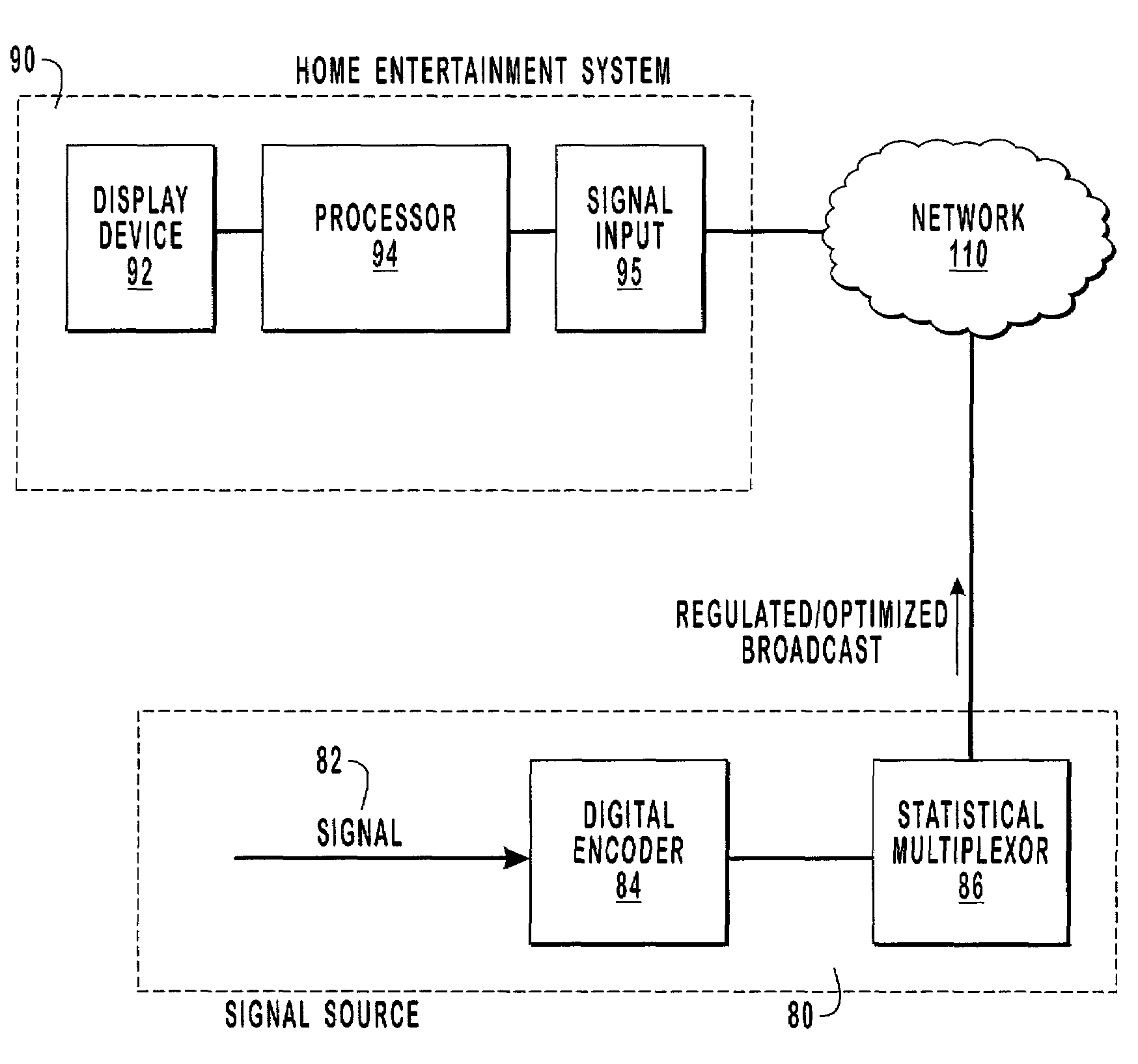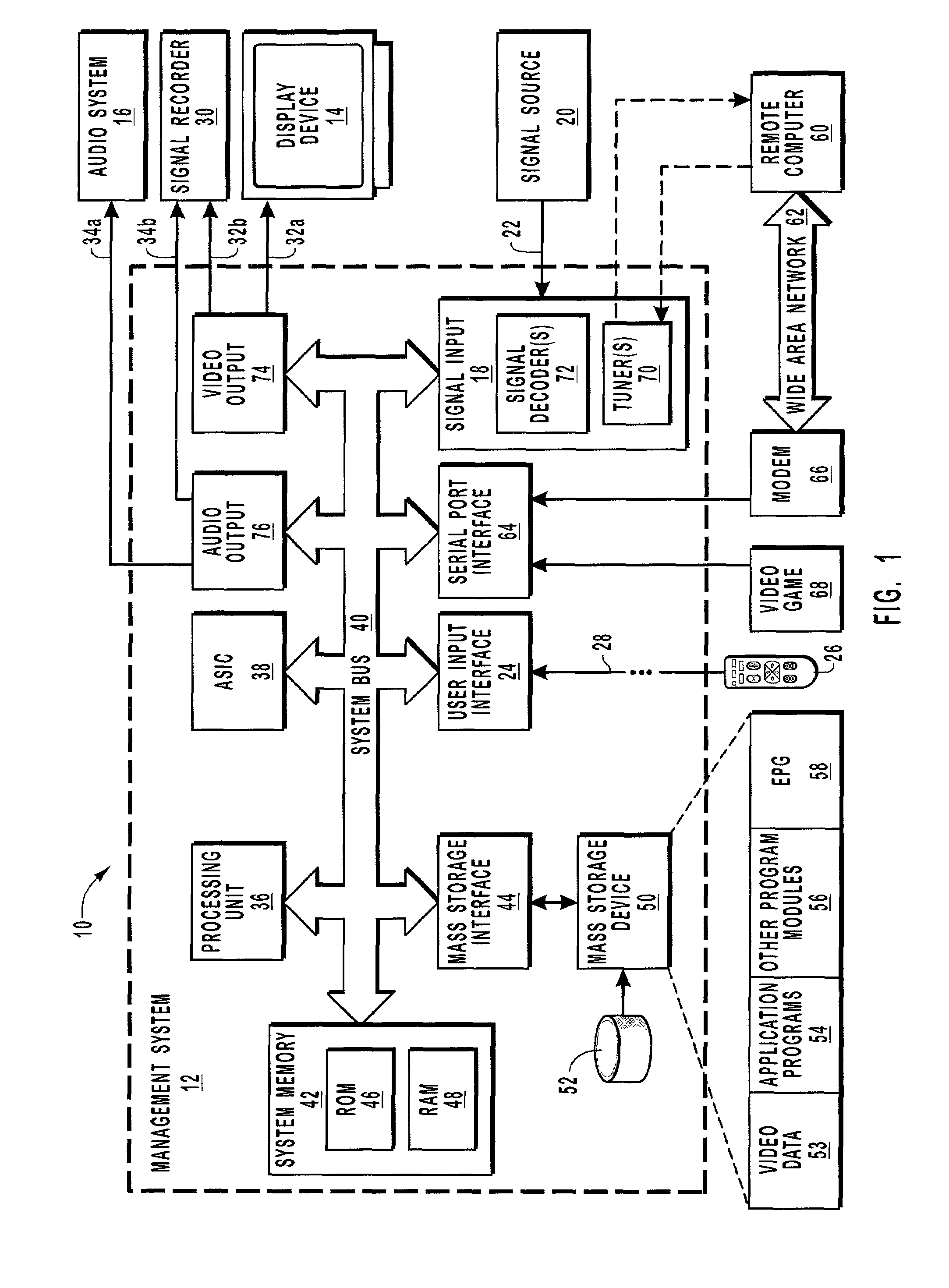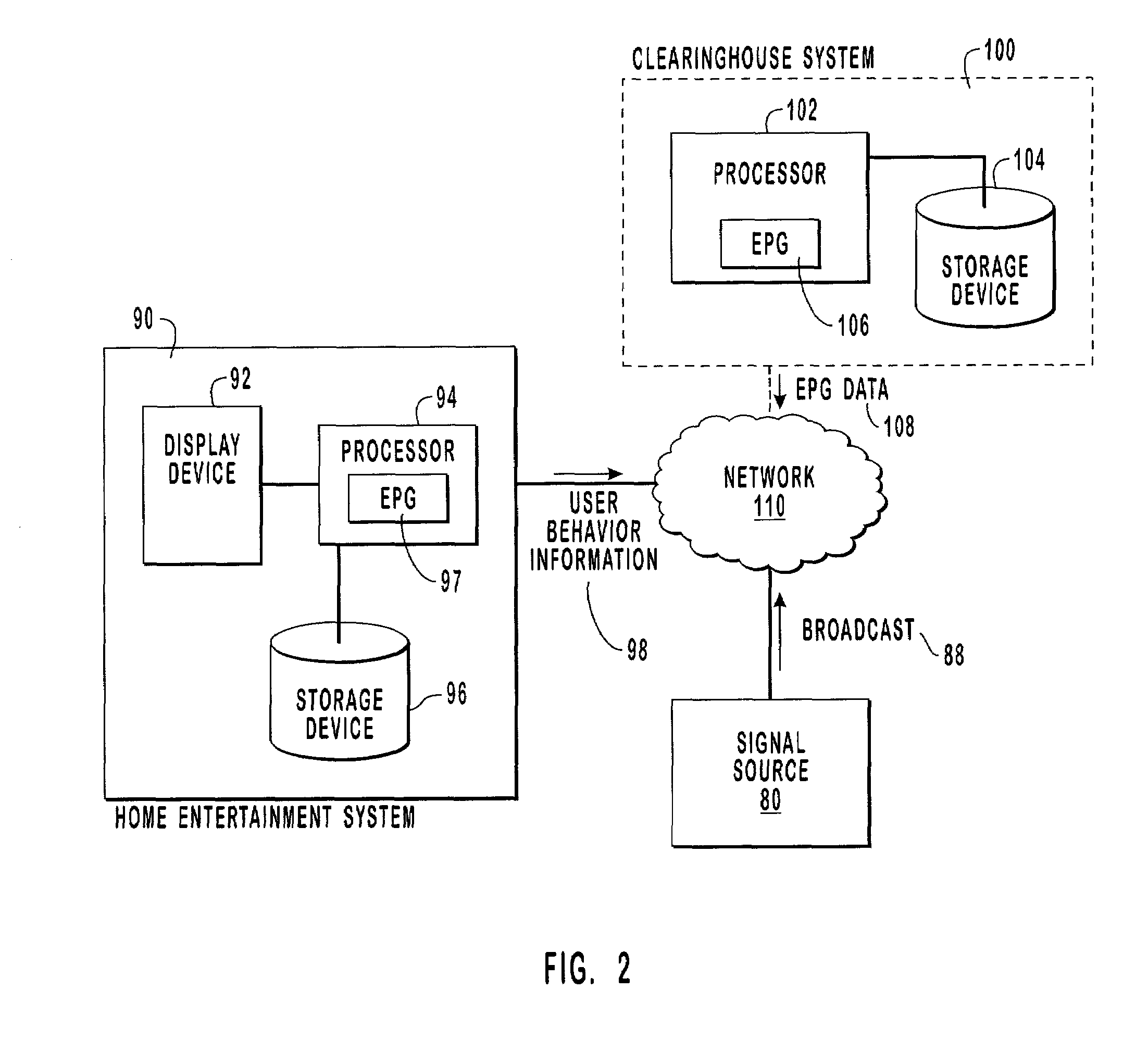Regulating the quality of a broadcast based on monitored viewing behavior information
a technology of viewing behavior and quality control, applied in the field of regulating the quality of a broadcast based on monitored viewing behavior information, can solve the problems of limited data collection, limited information collection methods, and limited data collection, so as to improve the quality of the broadcast, reduce the inaccuracy of processing tracked data, and improve the feedback
- Summary
- Abstract
- Description
- Claims
- Application Information
AI Technical Summary
Benefits of technology
Problems solved by technology
Method used
Image
Examples
Embodiment Construction
[0021]The present invention relates to systems and methods for utilizing a back channel as a feedback system to regulate the quality of a broadcast. More specifically, the present invention is directed to tracking user behavior information at home entertainment systems corresponding to the broadcast, transmitting the tracked information as feedback across a back channel, and modifying the quality of the broadcast as a result of the feedback.
[0022]The embodiments of the present invention may comprise a special purpose or general purpose computer including various computer hardware, as will be discussed in greater detail below. Set top boxes that enhance the capabilities of conventional televisions represent an example of a special purpose computer. Examples of a general purpose computer include a personal computer, a laptop computer, and any other such computer capable of sending feedback across a back channel.
[0023]Embodiments within the scope of the present invention also include c...
PUM
 Login to View More
Login to View More Abstract
Description
Claims
Application Information
 Login to View More
Login to View More - R&D
- Intellectual Property
- Life Sciences
- Materials
- Tech Scout
- Unparalleled Data Quality
- Higher Quality Content
- 60% Fewer Hallucinations
Browse by: Latest US Patents, China's latest patents, Technical Efficacy Thesaurus, Application Domain, Technology Topic, Popular Technical Reports.
© 2025 PatSnap. All rights reserved.Legal|Privacy policy|Modern Slavery Act Transparency Statement|Sitemap|About US| Contact US: help@patsnap.com



